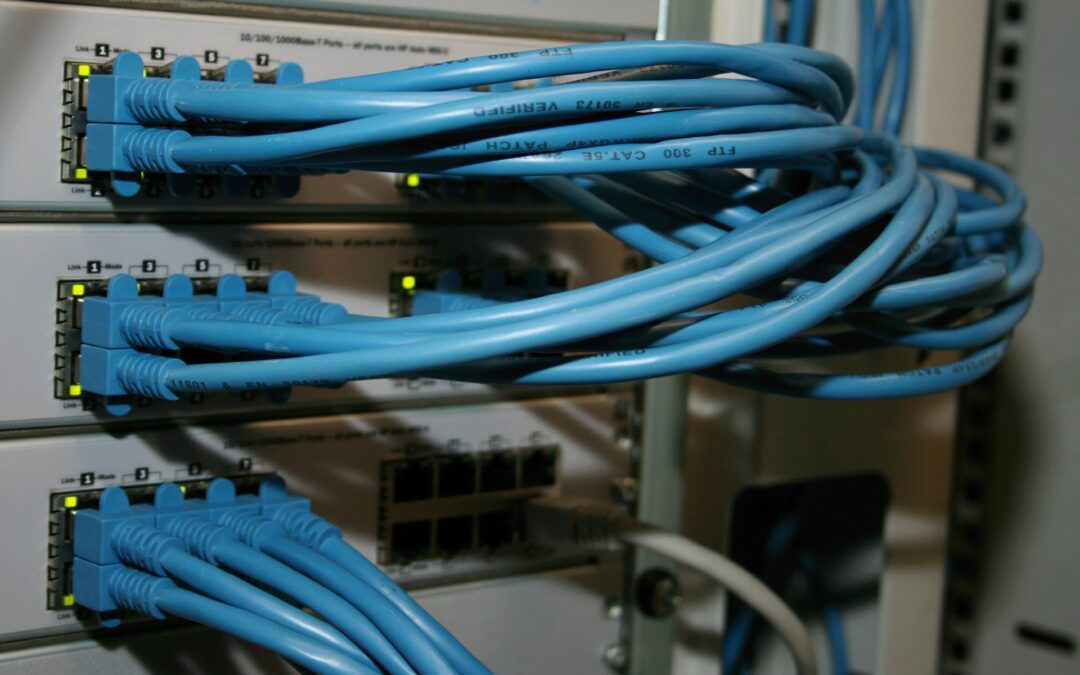Running a business in Boston means dealing with weather that changes fast from freezing rain in late fall to heavy snow in early winter, then sudden thaws before spring. These weather swings don’t just affect roads and rooftops. They can cause real problems for the cables that keep your business plugged in and online. Wet conditions, strong temperature shifts, and ice buildup can all hit your data cabling hard if those lines aren’t protected properly.
When things go wrong with your business network, the impact is immediate. Lost internet connection, frozen point-of-sale systems, or delayed communication between departments can mess up daily operations. That’s why weather-proofing your data cable setups matters a lot more than most folks think. It’s something that should be handled before systems start failing, not after. The goal is to make sure your business stays connected, responsive, and running smoothly through New England’s most challenging seasons.
Assessing Your Current Data Cabling Setup
Before figuring out how to protect your cables from weather damage, it’s smart to look at what you already have in place. You might think everything is fine just because your systems are working. But problems caused by rain, snow, and changes in temperature often build slowly and aren’t easy to spot until something breaks.
Here’s where to start:
1. Check indoor cabling near doors, windows, or poorly sealed walls. These spots let in moisture and wind more than you’d expect.
2. Inspect outdoor lines where cables connect between buildings or exit walls. Watch for exposed sections, rusted clips, and broken covers.
3. Review cable runs along parking lots, overhangs, rooftops, or basements, especially ones near drainage paths or snow piles.
One way to get a fuller picture is to schedule a walkthrough with someone trained to spot cable vulnerabilities. They’ll know how to track down the small signs of exposure that can lead to big issues. Whether it’s a cracked conduit or a loose seal around a wall opening, a fresh set of eyes can catch the details you’ve grown used to ignoring.
Over time, small problems like cold air sneaking into a junction box or moisture building up on a cable tray can wear out your lines much faster than standard use ever would. If your business has grown or been rearranged in the last year or so, chances are some parts of your cabling setup were added on the fly and weren’t built to hold up against snowmelt, sleet, or salt.
Keeping cables safe during Boston’s winters starts with knowing where you’re vulnerable. Take the time to uncover those weak spots now, and you won’t be racing to fix a frozen network during an ice storm.
Installing Weather-Resistant Cables
Once weak spots have been identified, the next move is to swap out any poor-quality or damaged lines and install cabling that’s built to handle tough conditions. The material you use matters just as much as where it’s placed.
Look for cables that are rated for outdoor and industrial use. These usually come with heavy-duty jackets that guard against moisture, sunlight, and extreme temperatures. You’ll also want to ask about water-blocking gel or foil shielding, which helps protect the wiring if water seeps through a crack in the covering.
Installation methods play a big part too:
1. Use sealed conduit or casing when running cable underground or along exterior walls
2. Add weatherproof junction boxes where wires meet or get split to other locations
3. Install drip loops at outdoor entry points to steer water away from where it enters the building
4. Apply proper sealant around wall penetrations to stop water and air from getting inside
5. Avoid sharp bends or tight pull angles, which can weaken cable casings over time
If your cables run under snow-heavy areas like rooftops or along building siding, make sure to use UV-rated insulation, even in the colder months. Snow may sit on a line for weeks, but once the sun comes out, that same line can heat up fast and start to flex or soften. Durable outer jackets limit that kind of damage.
One business in South Boston had recurring issues every February with glitchy servers. After a closer look, they found old data cables running along the edge of the roof with no protection. They had taken in moisture from snowmelt dripping down the side and freezing at night. Swapping in shielded cables installed in weather-tight conduit helped fix the issue for good and made the system more stable through future winters.
Whether you’re replacing old lines or setting up a new expansion that needs outdoor connectivity, choosing the right materials and using smart installation methods makes a big difference. Weather-proofing starts with good planning and ends with cables you don’t have to second-guess when the next cold snap hits.
Maintenance Tips for Weather-Proof Data Cabling
Even with the right cables and careful installation, Boston’s weather will still test your setup. Snow, ice, and heavy rain have a way of wearing things down little by little. The best way to stay ahead of problems is with regular, seasonal upkeep. A few simple checks throughout the year can help keep small issues from turning into big breakdowns.
Start with a basic plan for inspections. You’ll want someone to check outdoor and exposed indoor cabling at least a few times a year, especially before the deep freeze sets in, and again in early spring as things thaw. Look for cracking in seals, rust around junctions, or signs that cables are sagging or slipping out of their brackets.
Here are a few routine practices worth putting in place:
1. Clear away any debris or ice buildup around exterior cabling
2. Check mounting hardware to make sure it’s still holding steady
3. Test your system’s performance to catch slowdowns early
4. Reseal any cable entry points that show signs of wear
5. Look for pooled water or signs of snowmelt near underground or lower wall exits
If you see issues like signal drops, slowed internet, or random device disconnects, don’t assume it’s a fluke. These can be early signs that your cables aren’t handling changing temperatures or moisture well. Addressing that soon could save you a full system shutdown later.
Don’t try patching things with materials not designed for cabling. A roll of duct tape might hold for a day, but it won’t solve anything during a January storm. Temporary fixes often end up inviting more long-term damage. You’ll want a trained professional to handle repairs, especially for damaged or aging outdoor lines.
Keeping a schedule and acting fast when something looks off can greatly extend the life of your data infrastructure. It also gives your business more stability during unexpected weather changes, especially in a place like Boston where forecasts can shift by the hour.
The Role of Professional Cabling Services
When it comes to something as critical as your data network, cutting corners eventually catches up with you. That’s where professional cabling services come in. Having the right team handle installation, inspection, and repairs gives you confidence that your system won’t go down when the next nor’easter rolls through.
Trained cabling techs bring more than just tools. They understand how moisture creeps into access points, what materials hold up through Boston winters, and how to route lines in a way that avoids long-term wear. From underground wiring to rooftop conduits, they’ve seen the small issues that most business owners might miss.
One Boston restaurant had an outdoor patio expansion done quickly during early fall. Cables for POS units, lights, and security cameras were rushed into place to hit a seasonal deadline. By late December, the whole system went down. Ice had gotten into the loosely sealed ports and corroded some of the connections. After those lines were rerun by professionals with the proper protection in place, they didn’t have another issue even in subzero temps.
Experienced teams also factor in future flexibility. They’ll often install with growth in mind, planning cable runs that can support additional systems or newer tech without needing another overhaul. And when something does break down, they’ll know how to fix it without disrupting your entire setup.
For businesses in Boston, routines like this aren’t just a smart idea. Weather changes so fast that your cables can go from dry to soaked to frozen in just one day. Working with experts gives your business a fighting chance to stay connected and ahead of issues before they interrupt your operations.
Staying Connected No Matter the Forecast
Weather-proofing your data cables isn’t just about one-time fixes or seasonal upgrades. It’s a long-term approach that keeps your business running through snowstorms, heavy rain, and anything else Boston skies might throw your way. Having the right cables in place is the first step, but what really makes a difference is the ongoing care and attention they get after the job is done.
Systems that hold up over time are always built with planning, protection, and follow-ups. Whether you’re dealing with outdoor POS lines, office-to-office connections, or outdoor security wiring, all those setups need the same kind of seasonal awareness and maintenance.
By investing in smart installation strategies and staying ahead of wear and tear, you’re not just avoiding breakdowns. You’re helping your business avoid sudden costs, lost time, and unexpected disruptions. When you’re prepared for the weather, your cables will be too.
To ensure your business stays connected no matter the weather, consider working with professionals who understand the unique challenges of maintaining reliable systems in New England’s climate. At ASCIO Wireless, we offer solutions designed to keep your infrastructure running smoothly through every season. Learn more about our data cabling services in Boston and how we can support your business’s connectivity needs.

